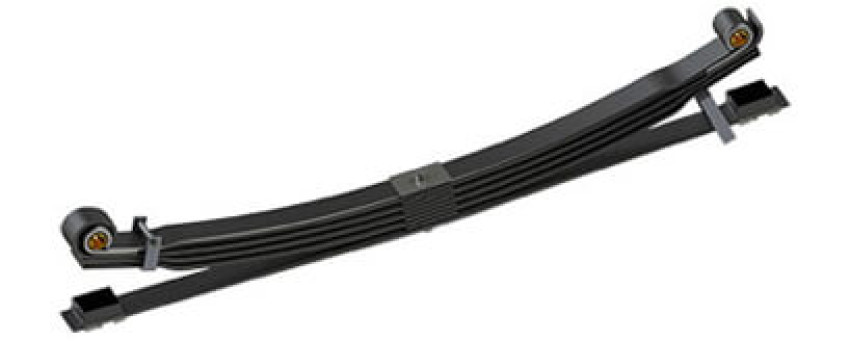
In the ever-evolving landscape of automotive engineering, the choice of suspension components plays a pivotal role in defining a vehicle's performance, comfort, and durability. Among these components, parabolic leaf springs have gained prominence for their unique design and exceptional attributes. This article delves into the key factors influencing the selection of parabolic leaf springs in vehicle design, shedding light on the considerations that engineers weigh when opting for this advanced suspension technology.
1. Weight Distribution and Payload Capacity:
Parabolic leaf springs are renowned for their ability to distribute weight more evenly across the axle, providing a balanced and stable ride. In the realm of vehicle design, engineers meticulously calculate payload capacities and assess weight distribution patterns to ensure optimal performance under varying load conditions.
2. Ride Comfort and Handling:
The shape and design of parabolic leaf springs contribute significantly to a smoother ride experience. The progressive nature of these springs allows for better shock absorption, reducing vibrations and jolts. This factor becomes crucial in enhancing ride comfort for both passengers and cargo, making parabolic leaf springs an attractive choice for vehicles emphasizing a smooth and controlled ride.
3. Durability and Longevity:
The durability of suspension components is paramount in the automotive industry. Parabolic leaf springs, with their tapered design and stress distribution characteristics, exhibit improved resistance to fatigue and wear. Engineers prioritize longevity in vehicle design, aiming for components that can withstand the rigors of daily use and diverse driving conditions.
4. Adaptability to Varied Applications:
Parabolic leaf springs find applications not only in conventional automobiles but also in a wide array of vehicles, including trucks, buses, and off-road vehicles. The adaptability of these springs to different vehicle types is a key consideration for designers, allowing for a standardized and efficient approach in the production of diverse vehicle models.
5. Cost-Efficiency and Manufacturing Considerations:
While performance and quality are paramount, cost considerations are also a crucial factor in vehicle design. Parabolic leaf springs, with their efficient use of materials and streamlined manufacturing processes, often present a cost-effective solution compared to other suspension options. This balance between performance and cost is integral in the decision-making process for automotive manufacturers.
6. Maintenance Requirements:
Vehicle maintenance is an ongoing concern for both manufacturers and end-users. Parabolic leaf springs, with their simplified design and reduced friction points, often result in lower maintenance requirements. This aspect contributes to the overall cost of ownership and is a key factor in the selection of suspension components during the design phase.
In conclusion, the selection of parabolic leaf springs in vehicle design is a multifaceted decision that involves a careful consideration of factors ranging from weight distribution and ride comfort to durability and manufacturing efficiency. As automotive engineering continues to advance, parabolic leaf springs stand out as a versatile and effective solution that addresses the diverse needs of modern vehicles. By understanding and optimizing these influencing factors, engineers pave the way for vehicles that deliver superior performance, comfort, and longevity in an ever-changing automotive landscape.


